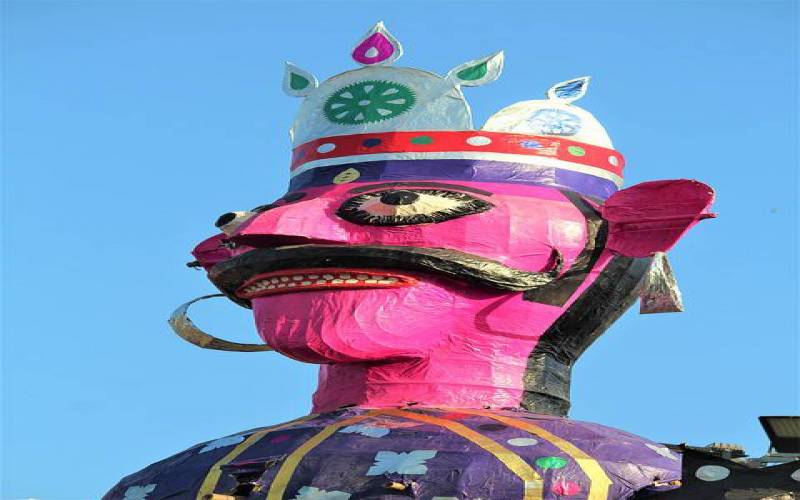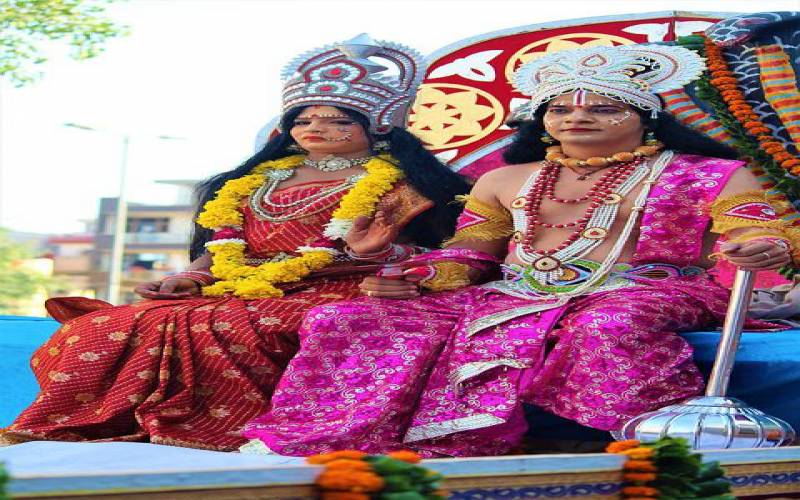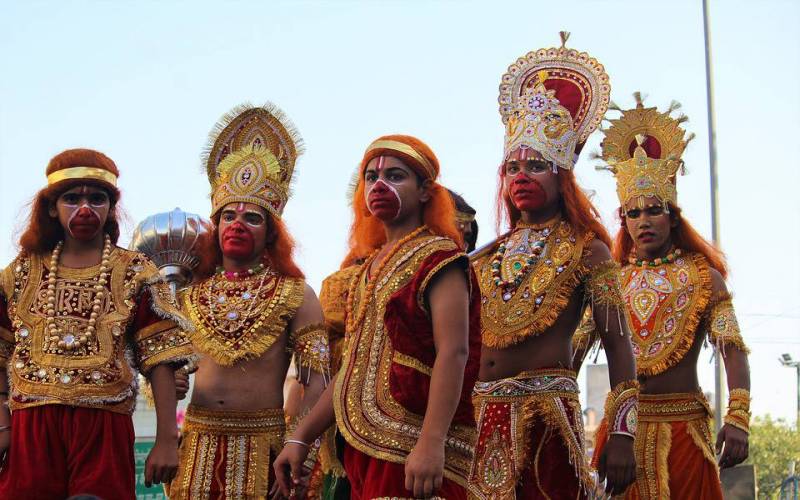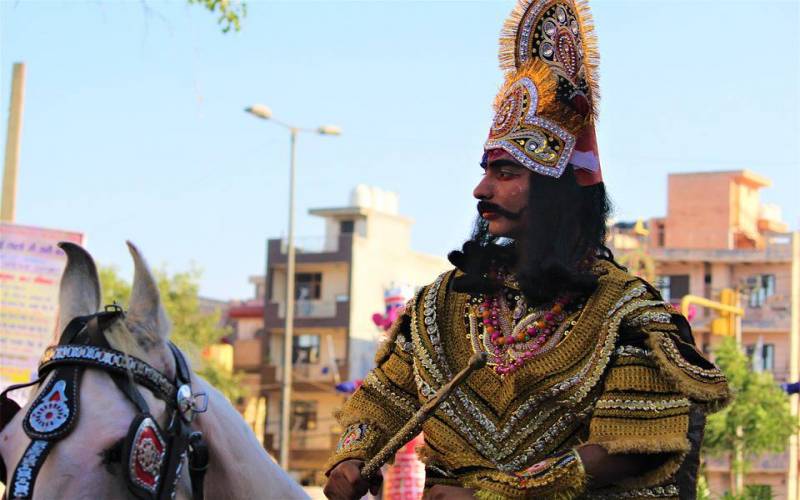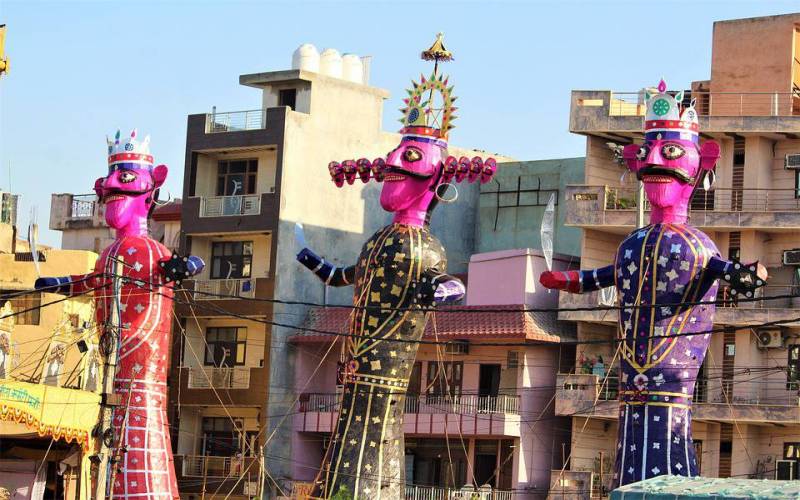Dussehra Festival, India
Durga Puja and Vijayadashami are called Dussehra in the north and west, respectively, though the essence of the festival remains the same, namely, the good prevailing over the evil, according to the Hindu calendar, Vijayadashami and Dussehra festival falls on the tenth day of the Navratras.
The Durga Puja or Vijayadashmi festival commemorates Mahishasura's defeat of Maa Durga in protecting the dharma. While Dussehra represents Lord Rama's triumph over Ravana. Ram Lila, a brief retelling of Rama, Sita, and Laxman's story, also ends on this day. Dussehra is celebrated through the burning down of effigies of Ravana, Kumbhakaran, and Meghanad (symbolic of evil), which reminds us that Good triumphs over Evil no matter what. In the Hindu epic Mahabharata, it was also on the same day that Arjuna wiped out the Kuru clan, including great warriors such as Bhisma, Drona, Karna, and Ashwathama, alone.
Dussehra and Vijayadashami are celebrated in various ways in India because of their different stories behind them. During Dussehra, for instance, Lord Rama is honored in most places in northern or western India. There have been many re-performances of musical plays of the Ramcharitramanas leading up to the Dussehra festival which involves the burning of large effigies of Ravana, Kumbhakaran, and Meghanad. Its essence, which consists of the triumph of good over evil; that is, how Dharma is set apart from Adharma, remains the same, regardless of how it is known by different names. Vijayadashmi or Dussehra is a festival that signifies a turning away from negativity, prejudices, and stereotypes. It signifies a new beginning.
